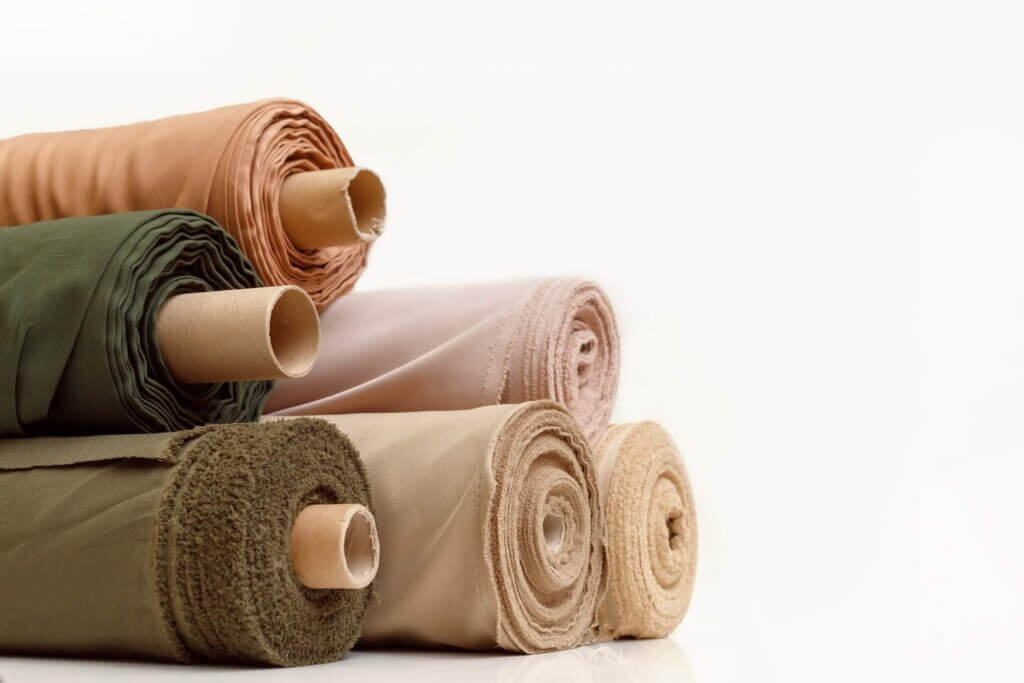There has been a lot of talk about using sustainable materials in all sorts of industries. This is because the world is under much strain due to environmental problems. It is high time for us to be conscious of the environment and try our best to use products and materials that positively contribute to it. To have a better environment and a healthier planet, many industries are shifting towards using sustainable materials. This may lead many experts to wonder what sustainable material is. In this blog post, we will address sustainable materials’ meaning and what sustainable materials options you can find. Clothing and fashion manufacturers will be able to make more informed choices regarding the fabrics they select and help society reach our Sustainable Development Goals (SDGs).
Understanding Meanings of Sustainable Materials
Sustainability is driven by the word sustain, which means to strengthen. The world at present is in a poor state; the pollution rate is at its all-time high, and climate change and global warming are extremely worrying for people everywhere. In such testing times, it is important for the people of earth to step up and practice sustainability in everything they do. Sustainability can be in lots of things such as natural resources, energy, and even the materials we use. Therefore, it is our responsibility to be as sustainable as we can be in daily life.
How Do You Define Sustainable Fabrics & Materials?
Sustainable fabrics and materials are commonly defined as those sourced from natural or recycled materials. Materials that do not negatively impact the environment are said to be sustainable.
Typically materials in their production stage cause the most harm to the environment if they are not sustainable. Other than that, unsustainable materials can cause great damage to the environment through carbon emission, landfill, water wastage, and even water pollution.
Sustainable products go through a complete life cycle from production to disposal without leaving any negative impacts on the environment. Before putting it into production, manufacturers should ensure that they use reliably sustainable materials, so they do not harm the environment in any way possible.
Types of Sustainable Materials
Brand owners and manufacturers play a pivotal role in practicing sustainability. They are the ones who use materials to produce socks and other types of clothes. It is crucial for these stakeholders to understand that some materials are majorly eco-friendly, some partially, and some none at all. We can divide sustainable materials into 3 major categories:
1. Biodegradable
Sustainable materials are biodegradable. This means that these materials can quickly decompose on their own in the natural environment. Non-biodegradable materials are often marketed as highly durable, but their durability comes with a high cost for the environment. These materials can take forever to decompose, causing significant environmental damage. This has prompted materials scientists to look for alternative solutions and develop biodegradable synthetic materials.
2. Sustainability and Recycling
Recycling conserves energy, reduces air and water pollution, reduces greenhouse gas, conserves natural resources, and contributes to a sustainable environment. Much like household solid waste, including cardboard and plastic containers, industrial waste is also a valuable commodity that can easily and effectively be reused and recycled. When correctly processed, these recycled materials can be melted back and used to make something new entirely. Sustainability and recycling go hand in hand; they lessen the producer’s demand for raw materials thus preserving the environment and cutting production costs.
3. Limited Use of Petroleum
Many unsustainable materials come from petroleum, and one cannot overestimate the negative environmental impact of the petroleum industry. If, as manufacturers, you want to practice sustainability, you should reduce and, if possible, avoid petroleum usage entirely.Going green is gradually becoming a core part of many business strategies, from retail to manufacturing. This results from the fact that consumers are well aware of the damages we cause to the environment and are ready to invest in sustainable necessities such as sustainable socks.

Recycled and Natural: Sustainable Materials on the Market
Even if a clothing manufacturer sources fabrics and makes clothes locally, reduces fabric waste, and pays its workers fairly, their exact fabric choices may still stop them from being able to call themselves truly sustainable. If you are on the search for sustainable fabrics and materials on the market, then here are the 2 most sought-after categories:
1. Recycled Materials
Using recycled fabrics is one way that the fashion industry can show that they are mindful of the environment. There are many options on the market, but mainly we can find recycled polyester, cotton, nylon, and wool. recycled polyester and recycled nylon, in particular, are leading recycled materials to use. These materials are recycled versions of Nylon and Polyester made using synthetic waste from the oceans. By using a product that has already been processed, the amount of energy, water, and dye is reduced—the savings are achieved by offsetting the production of new materials.
Recycled Polyester
Recycled polyester, or rPET, is one of the world’s most traceable fibers and is made from 100% recycled materials. For instance, REPREVE’s recycled polyester is made from post-consumer water bottles and pre-consumer waste. Recycled polyester fabric is soft to the touch yet durable and robust. Its application therefore abounds, ranging from clothing, footwear, to medical accessories.
Roasted under high temperature, baked, brewed, and grounded, fabrics made from coffee ground fiber constitute the foundation of the fashion industry’s greener future; plus, they are functional and versatile. Take S.Café ® fabrics for example. Combined with the polymer through the patented S.Café® technology, this sustainable material features superior odor control, fast drying, anti-UV, and a cool feeling. These functionalities make coffee yarn a perfect fit for active lifestyles.
Recycled Nylon
Recycled Nylon poses the same environmental benefit as recycled polyester: Production of this regenerated fabric uses much fewer resources than virgin nylon (including water, energy, and fossil fuel). Recycled nylon is sourced from pre and pro-consumer waste, such as fishing nets and other nylon waste from the ocean. Hence, it helps cleanse the ocean of unwanted material and prevent adding more.
With some clever innovations and technology, fashion could be the answer to saving the lives of our beautiful marine life. Take Econyl for example. This newer material on the market is regenerated nylon created by Italian firm Aquafil. Econyl has been used to create new lines of lingerie, high-performance sportswear, swimwear, and outdoor apparel. Beyond its biodegradability, outstanding fatigue and heat resistance are significant features of this sustainable material.
2. Natural Materials
Linen
Made from flax, linen does not need any fertilizer to grow. Surprisingly, it is usually planted in areas where other plants have little to no chance of growing. There are no waste products as flax can be used entirely.
Bamboo
Similar to linen, Bamboo does not need fertilizer to grow. Wonderfully soft, crease-resistant, sweat-resistant, and eco-friendly. If properly made, Bamboo is an excellent option for sustainable materials.
Organic Cotton
Organic cotton is one of the best sustainable fabric options, as it does not have a harsh manufacturing process and is certainly without synthetic fertilizers or other toxic pesticides. Producing organic cotton uses lower carbon due to lesser fuel and energy consumption. Because it goes through a chemical-free production process, it also prevents water contamination. No wonder organic cotton has been one of the most popular sustainable materials among socks businesses.
Silk
Silk is produced with little to no waste and comes from silkworms that are not prone to pollution. However, it is often under trial for not being very animal-friendly.
Wool
Biodegradable, anti-wrinkle, breathable, and easy to clean, wool is versatile and a natural protein fiber found on the backs of millions of sheep. Wool socks are especially useful during the winter months or for sweaty feet, as wool keeps its insulating properties while wet.
Hemp
Hemp is an excellent replacement for cotton; it comes from the hemp plant that does not need pesticides to grow. Moreover, it is gentle on all skin types, making it a good choice for socks and underwear.
Pinatex
Made from pineapple leaves and naturally biodegradable, Pinatex is the vegan alternative to leather and a great replacement for non-organic cotton. This sustainable material was created by Dr. Carmen Hijosa after she spent years working in the leather industry and saw first-hand the environmental and ethical impact of the material. The sustainable materials and fabrics we explored earlier are some of the best choices for manufacturers or brand owners looking to be more sustainable in their socks business while working towards a better environment! To learn more about the sustainable socks trend, including some of the most popular sustainable materials for socks, explore our previous article: What Is This Sustainable Socks Trend All About?
Tapping into the Trend of “Shop Better By Knowing Your Fabrics”
The world is growing more and more conscious at the moment. People are now actively making the world a better place to live in. This is why many of us are following the ‘Shop Better By Knowing Your Fabrics’ trend. This is where consumers keep a watchful eye on the products they buy to ensure that they are environmentally friendly.
They are pushing brands to bring more sustainable fabric options to the table so they can play their part in helping the environment heal from all the pollution. Brands and manufacturers need to step up and use sustainable materials to meet the expectations of their customers.Want to start a sustainable sock business? Our sustainable fashion materials can help you make your business better and greener! Let’s Connect!



